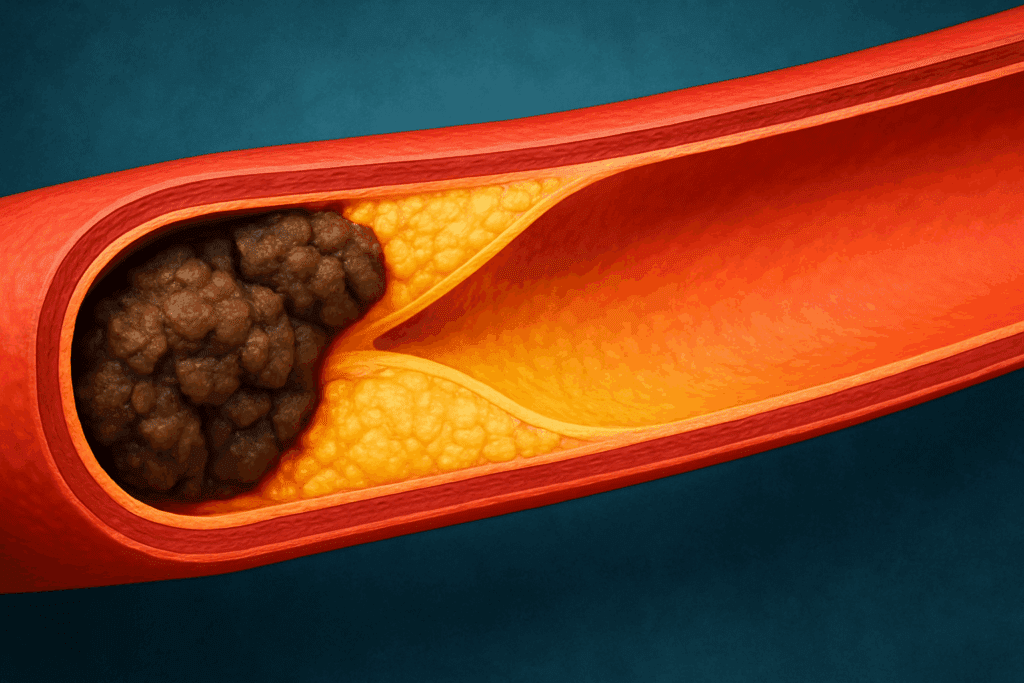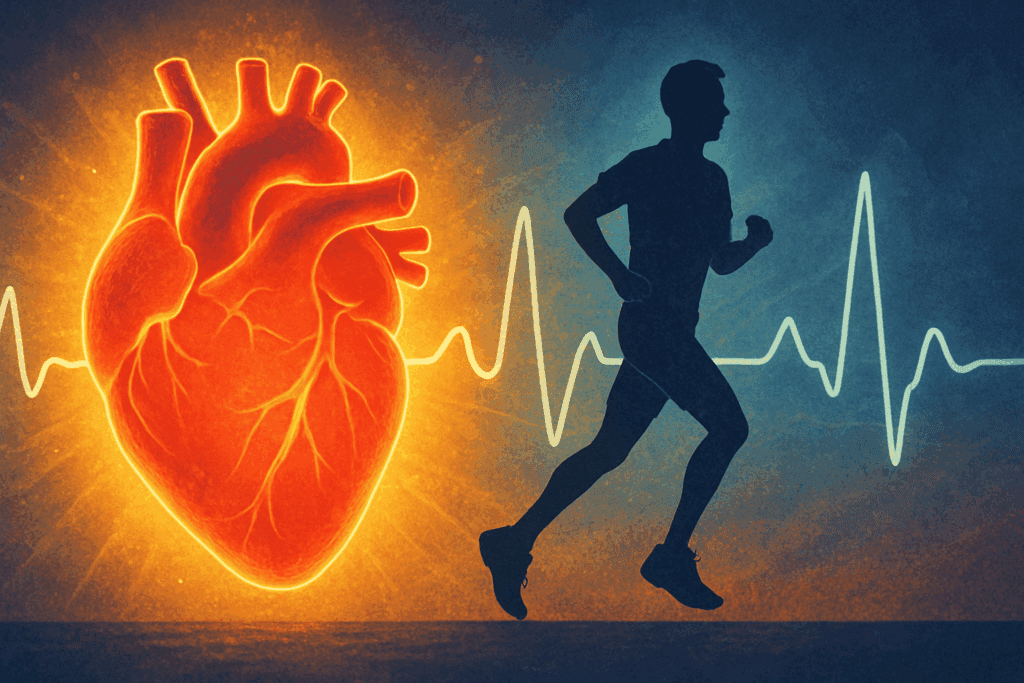Heart disease continues to be one of the most pressing health concerns of the modern era, accounting for millions of deaths each year and placing an enormous burden on healthcare systems worldwide. As scientific research continues to evolve, a growing body of evidence has shifted the narrative from mere management of cardiovascular disease to potential reversal. Among the most promising interventions is one that is accessible, sustainable, and deeply rooted in our biology: exercise. But how realistic is this approach, and is heart disease reversible with exercise alone? This article dives into the science behind cardiovascular repair and explores whether physical activity can truly reverse heart disease.
You may also like: Smart Nutrition Choices for a Healthier Lifestyle: What to Know About Whole Grain Rice and Whole Wheat Rice

Understanding the Nature of Heart Disease
To grasp how exercise might reverse heart disease, it’s essential to first understand what heart disease is. Most often, the term refers to coronary artery disease (CAD), which is caused by the buildup of plaque in the arteries. This plaque, composed of fat, cholesterol, calcium, and other substances, narrows the arteries and reduces blood flow to the heart. Over time, the restricted blood flow can result in chest pain, shortness of breath, or, more seriously, a heart attack. Atherosclerosis, the progressive hardening and narrowing of the arteries, is generally viewed as irreversible. However, recent findings suggest that targeted interventions—including exercise—may change this outlook.
While genetics certainly play a role, lifestyle factors are heavily implicated in the onset and progression of heart disease. Diet, tobacco use, stress, and physical inactivity are some of the most influential modifiable risk factors. When we ask whether heart disease is reversible with exercise, we must view the question through the lens of these complex, interacting elements. Exercise may not act in isolation, but it does serve as a cornerstone of comprehensive lifestyle change capable of transforming cardiovascular health.

The Evidence Behind Exercise and Cardiovascular Repair
The idea that exercise could reverse heart disease isn’t new. Pioneering researchers such as Dr. Dean Ornish laid the groundwork decades ago by demonstrating that comprehensive lifestyle interventions—including exercise—could halt or even regress coronary artery blockages. These studies, though sometimes criticized for small sample sizes, ignited widespread interest and set the stage for larger, more rigorous investigations.
Today, a growing body of peer-reviewed studies confirms that consistent physical activity has profound benefits for the cardiovascular system. Aerobic exercise improves endothelial function, the ability of blood vessels to dilate and regulate blood pressure. It also reduces inflammation, improves insulin sensitivity, and promotes the growth of collateral blood vessels—natural bypasses around blocked arteries. All of these mechanisms contribute to improved heart function and, in some cases, a measurable reduction in plaque accumulation. In other words, yes—under certain conditions, exercise can reverse heart disease.

Why Aerobic Exercise Matters Most
When it comes to cardiovascular recovery, aerobic exercise—often referred to as cardio—is king. Brisk walking, cycling, swimming, or jogging for at least 30 minutes a day has been shown to reduce resting heart rate, lower blood pressure, and improve oxygen uptake (VO2 max). These adaptations are critical for heart disease patients, as they increase efficiency in how the heart pumps blood and reduce overall strain on the cardiovascular system.
One of the most exciting aspects of aerobic training is its role in angiogenesis, the process of forming new blood vessels. When existing arteries are clogged or narrowed, the body can, under the right circumstances, create new pathways to ensure adequate blood flow. This natural form of bypassing blocked vessels doesn’t happen overnight, but it becomes more efficient with consistent cardiovascular training. Patients often report increased energy, reduced chest pain, and greater stamina—all signs that the heart is responding positively to the demands of aerobic conditioning.

Strength Training: An Overlooked Ally in Heart Health
While cardiovascular exercise gets most of the attention in discussions about heart disease reversal, resistance training plays a vital supporting role. Lifting weights, using resistance bands, or engaging in bodyweight exercises improves muscular strength, supports metabolic health, and enhances daily functioning. Importantly, it also reduces visceral fat—an internal type of fat closely linked to insulin resistance and cardiovascular risk.
For heart patients, strength training can lead to significant improvements in blood pressure and glycemic control, two critical components of heart health. It also strengthens the musculoskeletal system, which reduces the risk of injury and encourages long-term engagement in physical activity. Although it may not directly reduce arterial plaque, it contributes to a healthier physiological profile that complements the effects of aerobic exercise.
The Role of High-Intensity Interval Training (HIIT)
High-Intensity Interval Training (HIIT) has revolutionized the way people think about fitness and cardiovascular health. Unlike traditional steady-state cardio, HIIT involves short bursts of high-intensity effort followed by brief recovery periods. This approach has been shown to produce similar—or sometimes even superior—benefits in less time.
For individuals with heart disease, HIIT must be approached with caution and always under medical supervision. However, studies have demonstrated that HIIT improves VO2 max, mitochondrial efficiency, and endothelial function—often more quickly than moderate-intensity continuous training. As part of a carefully monitored program, HIIT can be an excellent addition for those wondering, can exercise reverse heart disease with higher efficiency? The answer appears to be yes, provided the intensity is well-calibrated to the individual’s condition.

Physiological Mechanisms That Support Reversal
The body has an incredible capacity to heal and adapt, particularly when given the right stimuli. Exercise triggers a cascade of biological events that work synergistically to restore cardiovascular health. One of the most critical is the increased production of nitric oxide, a molecule that relaxes blood vessels, improves circulation, and reduces arterial stiffness.
Additionally, exercise reduces systemic inflammation—a key driver in the progression of atherosclerosis. Physical activity also modulates the immune response and increases antioxidant capacity, countering the damaging effects of oxidative stress. These systemic improvements allow the body to stabilize existing plaque, reduce further accumulation, and in some cases, even reduce the volume of arterial blockages. Thus, when evaluating whether heart disease is reversible with exercise, these molecular and cellular changes provide a compelling argument in favor.

Exercise as a Key Component of Lifestyle Medicine
Reversing heart disease is rarely the result of one single intervention. Instead, it requires a comprehensive approach that includes dietary improvements, smoking cessation, stress management, and regular exercise. Physical activity often serves as the foundation because of its broad and powerful effects. It not only improves physical health but also enhances mood, cognitive function, and resilience—factors that play a significant role in long-term adherence to lifestyle changes.
Combining exercise with a whole-food, plant-based diet further amplifies its benefits. Foods rich in fiber, antioxidants, and healthy fats can work alongside exercise to improve cholesterol levels, reduce inflammation, and stabilize blood sugar. Together, these interventions form a powerful strategy to not just prevent heart disease but to potentially reverse its course.
The Role of Cardiac Rehabilitation
For patients recovering from a cardiac event or managing chronic heart disease, structured cardiac rehabilitation programs offer a medically supervised route to recovery. These programs typically include individualized exercise plans, dietary counseling, stress reduction strategies, and education on managing risk factors. Participation in cardiac rehab has been linked to lower mortality, fewer hospital admissions, and better quality of life.
Cardiac rehab also provides patients with a safe environment to gradually increase their activity levels while being closely monitored by healthcare professionals. For those asking, “can exercise reverse heart disease,” cardiac rehab represents a practical and scientifically supported answer. It translates theory into action and empowers individuals to take control of their heart health.
Consistency Is Crucial: Long-Term Exercise Commitment
While initial improvements in cardiovascular markers can occur within weeks of beginning an exercise program, long-term benefits hinge on consistency. Exercise must become a regular part of daily life, not a temporary fix. Studies show that individuals who maintain regular physical activity over the course of years are significantly less likely to experience adverse cardiovascular events, even if they previously had a heart condition.
Building a routine that includes both structured workouts and general physical activity—like walking, gardening, or cycling—can help maintain momentum. Using tools such as fitness trackers or mobile apps can provide motivation and accountability. The key is sustainability. A long-term commitment to movement is perhaps the most important factor in transforming heart health.
Personalization and Professional Support
No two individuals are the same, and responses to exercise can vary widely based on age, genetics, comorbidities, and baseline fitness levels. This is why a personalized approach is critical, especially for those with diagnosed cardiovascular conditions. Before embarking on any rigorous training program, consultation with a healthcare provider is essential.
Working with a qualified fitness professional or cardiac rehab specialist can ensure that the exercise plan is safe, effective, and tailored to individual needs. This support is especially important for individuals managing multiple health conditions or those who are hesitant to begin exercising due to fear or uncertainty. Personalized care ensures safety while maximizing results, helping patients progress toward the possibility of reversing heart disease.
Looking Ahead: The Future of Exercise in Cardiovascular Medicine
The question of whether heart disease is reversible with exercise continues to drive innovative research. Scientists are now exploring the effects of physical activity on gene expression, stem cell activation, and even tissue regeneration. These findings suggest that we are only beginning to understand the full potential of exercise as a form of regenerative medicine.
Technologies like wearable devices and AI-driven health monitoring platforms are also changing the landscape. They allow for real-time feedback, greater personalization, and better long-term adherence. As these tools become more sophisticated, they will likely play a larger role in helping individuals use exercise to reclaim their heart health.
Frequently Asked Questions: Can Exercise Reverse Heart Disease?
1. Are there specific types of exercise that are most effective for reversing heart disease?
Yes, the type of exercise matters greatly when addressing cardiovascular health. While any physical activity is beneficial, moderate-intensity aerobic exercise such as brisk walking, cycling, or swimming appears to be particularly effective in reversing certain aspects of heart disease. Research shows that these activities enhance circulation and reduce arterial stiffness. For those wondering, “can exercise reverse heart disease,” aerobic training stands out as the most consistently beneficial form. Incorporating resistance training and flexibility work further supports a balanced, heart-friendly regimen.
2. How does the timing and frequency of exercise impact heart disease reversal?
Consistency and regularity are more important than occasional intensity. To see improvements, individuals should aim for at least 150 minutes of moderate-intensity aerobic activity per week. Daily movement, even in smaller bouts, reinforces vascular health and metabolic balance. When exploring whether heart disease is reversible with exercise, studies indicate that sustained routines spanning months or years yield the most dramatic cardiovascular changes. Skipping weeks or reverting to sedentary habits can negate previous gains.
3. Can exercise reduce existing plaque in arteries, or does it only prevent new plaque formation?
Exercise influences both plaque stability and regression. While it may not fully eliminate hardened plaque, physical activity promotes favorable changes in plaque composition, making it less likely to rupture. Some advanced imaging studies have shown that consistent aerobic exercise can lead to modest reductions in plaque volume. For those asking, “can exercise reverse heart disease,” the answer is yes—but often through stabilization and partial regression rather than complete clearance. These changes can still dramatically reduce heart attack risk.
4. How soon can someone expect improvements in heart health after starting an exercise program?
Improvements in blood pressure, resting heart rate, and insulin sensitivity can begin within a few weeks of starting a structured exercise routine. VO2 max and other markers of cardiovascular fitness also increase relatively quickly. However, reversing arterial damage takes more time and sustained effort. For those wondering if heart disease is reversible with exercise, it’s important to view it as a long-term commitment with gradual but meaningful milestones. Health tracking tools can help visualize progress and keep motivation high.
5. What role does stress play in reversing heart disease through exercise?
Chronic stress is a well-known contributor to heart disease, and exercise acts as a powerful buffer. Regular physical activity reduces levels of cortisol and other stress hormones while increasing endorphins and dopamine. This hormonal shift improves heart rate variability and reduces systemic inflammation. For individuals asking whether they can exercise reverse heart disease holistically, the stress-reducing effects are a key component. By addressing both physiological and psychological contributors, exercise enhances total heart health.
6. Is exercise alone sufficient to reverse heart disease, or are other lifestyle changes required?
Exercise is essential, but not sufficient by itself. A diet rich in whole foods, avoidance of tobacco, consistent sleep, and effective stress management are also necessary for optimal reversal outcomes. Programs that integrate all these components tend to produce the best results. So, while asking “is heart disease reversible with exercise” is valid, it’s more accurate to consider exercise as one piece of a larger therapeutic puzzle. Integrative strategies produce synergistic effects that surpass exercise alone.
7. Can older adults or people with limited mobility still reverse heart disease with exercise?
Absolutely. Adaptive fitness programs tailored for seniors or individuals with mobility challenges can still yield significant cardiovascular benefits. Seated exercises, resistance bands, aquatic therapy, and even simple stretching can help improve circulation and heart function. For those with limited capacity, asking “can exercise reverse heart disease” may sound daunting, but even small, consistent movements can contribute to reversal. The key is customization and regularity rather than intensity.
8. Are there risks involved in exercising with existing heart disease, and how can they be mitigated?
While exercise is generally safe, individuals with diagnosed heart conditions should seek medical clearance before starting a new fitness routine. Supervised cardiac rehabilitation programs are ideal for mitigating risk while maximizing benefit. Gradual progression, proper hydration, and close monitoring of symptoms are crucial. When the question arises—”is heart disease reversible with exercise safely?”—the answer hinges on personalized plans, especially during the initial stages of recovery. With the right precautions, exercise becomes a safe and transformative therapy.
9. How do mental and emotional factors influence the success of reversing heart disease with exercise?
Mental health plays a critical yet often overlooked role in cardiovascular recovery. Depression and anxiety are common in heart patients and can negatively affect motivation and consistency with exercise. Support systems, counseling, and goal-setting improve adherence and emotional resilience. Asking “can exercise reverse heart disease” includes acknowledging the emotional hurdles that patients face. When addressed alongside physical activity, mental well-being can significantly amplify the therapeutic impact.
10. What emerging trends in fitness science may improve heart disease reversal in the future?
Wearable fitness tech, AI-driven health coaching, and personalized genomics are revolutionizing cardiovascular care. These tools allow individuals to monitor their heart rate, sleep quality, and recovery in real time, adjusting exercise accordingly. As technology evolves, predictive analytics could further tailor exercise prescriptions for maximum heart health benefits. The question “is heart disease reversible with exercise” may soon include customized insights derived from real-time data. Future interventions are likely to be more adaptive, precise, and responsive than ever before.
Conclusion: Embracing Exercise as a Tool for Cardiovascular Recovery
Asking the question “can exercise reverse heart disease” is no longer met with skepticism—it is now met with cautious, evidence-based optimism. While exercise alone may not completely eliminate existing arterial plaque, it can dramatically improve cardiovascular function, reduce disease progression, and, in many documented cases, reverse some aspects of structural damage. The science supports it, the physiology explains it, and the patient outcomes reinforce it.
By committing to regular physical activity—whether through aerobic workouts, strength training, or medically supervised rehabilitation—individuals living with heart disease can reclaim control of their health. Exercise is not a magic bullet, but when integrated into a comprehensive lifestyle strategy, it becomes a powerful catalyst for healing. For those willing to engage in the process, the heart is not only a vital organ—it’s a resilient one, capable of recovery and renewal.
Let this serve as both encouragement and a call to action: exercise isn’t just for prevention—it may be part of the cure. And in the journey toward reversing heart disease, every step, every heartbeat, and every movement truly counts.
Was this article helpful? Don’t let it stop with you. Share it right now with someone who needs to see it—whether it’s a friend, a colleague, or your whole network. And if staying ahead on this topic matters to you, subscribe to this publication for the most up-to-date information. You’ll get the latest insights delivered straight to you—no searching, no missing out.
Further Reading:
Can Exercise Reverse or Prevent Heart Disease?
Exercise may heal the heart as well as prevent future problems

